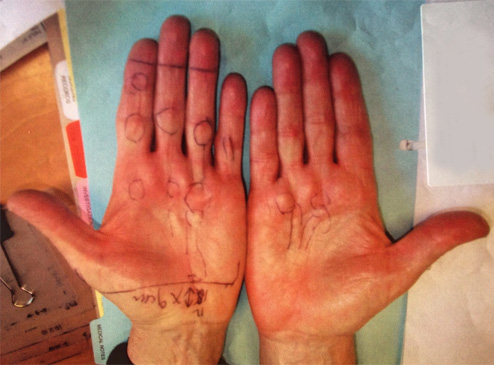Dupuytren's Contracture
Dupuytren's contracture, also known as morbus Dupuytren, Dupuytren's disease, or palmar fibromatosis is a fixed flexion contracture of the hand affecting a large number of individuals worldwide. This unpleasant condition causes contracture of the fingers leading to inability to fully extend some of the fingers, most commonly the ring finger and fifth finger of the affected hand. It is common for it to develop in both hands and there is often associated foot involvement (morbus Lederhose). Dupuytren's contracture can also be associated with other tissue disorders such as Peyronie’s disease. Often there is a family history.
In some patients Dupuytren's contracture may be a painless condition, in others there is discomfort or indeed pain for example when using an instrument or shaking hands. The disease usually, but not always, progresses slowly over a number of years. When patients visit their GP seeking medical advice, they are often told to wait until the fingers become really bent and then, they are referred for surgery. However, Dupuytren's contracture in its early stages can successfully be treated with low dose radiotherapy using a special superficial radiotherapy machine. In over 80% of patients, the progression can be reversed or stopped. 5 treatments are required, each taking less than 2 minutes. The patient should then leave a 2 month gap and afterwards the 5 treatments are repeated. There are no side effects from this treatment. During and after treatment patients continue exactly their same life activities. The benefit of this treatment becomes apparent over weeks or months and this is how radiotherapy works.
www.dupuytren-online.info
|

Dr John Glees is one of the pioneers of the use of low dose radiotherapy to treat this condition in the UK. NICE (National Institute Of Clinical Excellence) has now recognised the effectiveness of this treatment in their further guidelines as issued on 24th November 2010.
|

